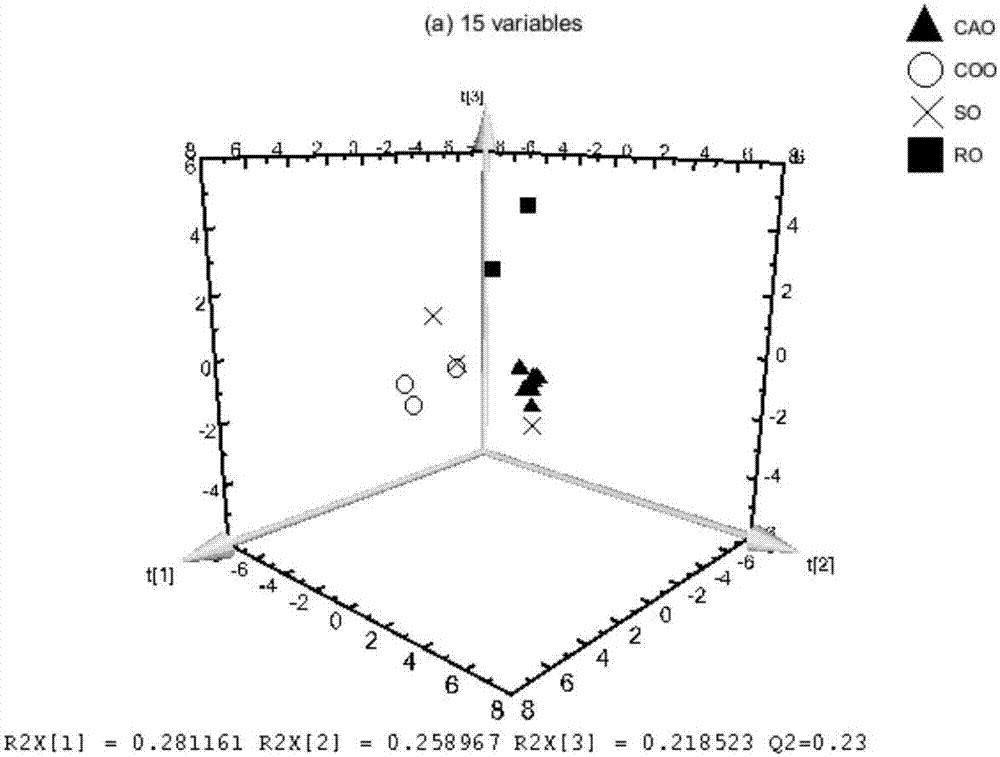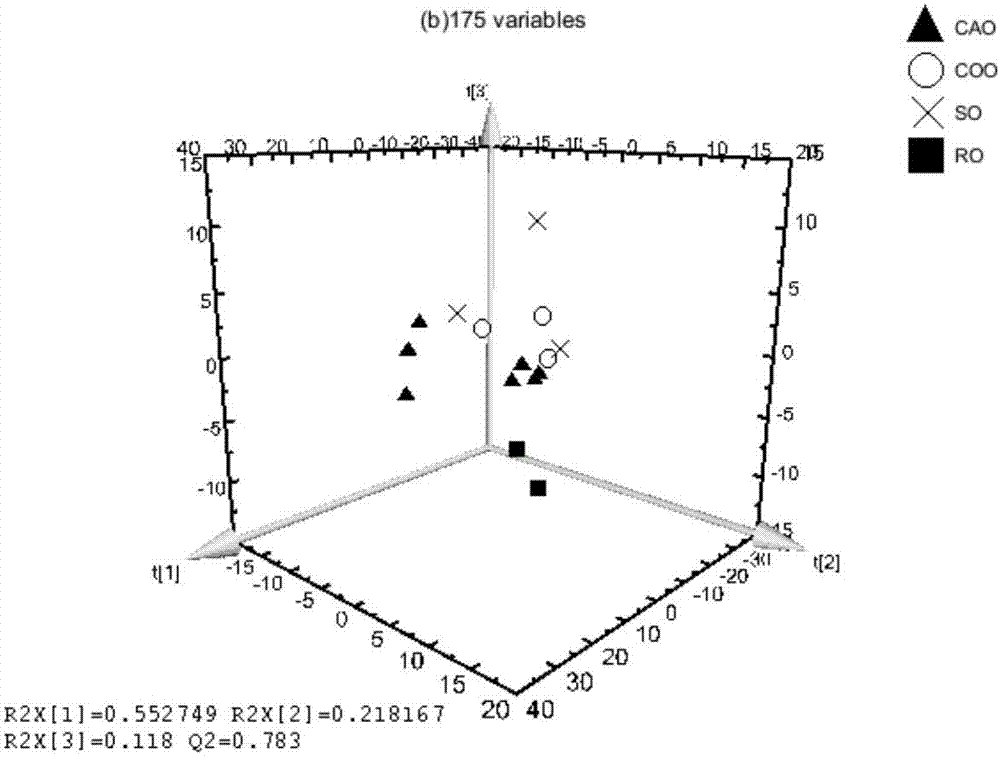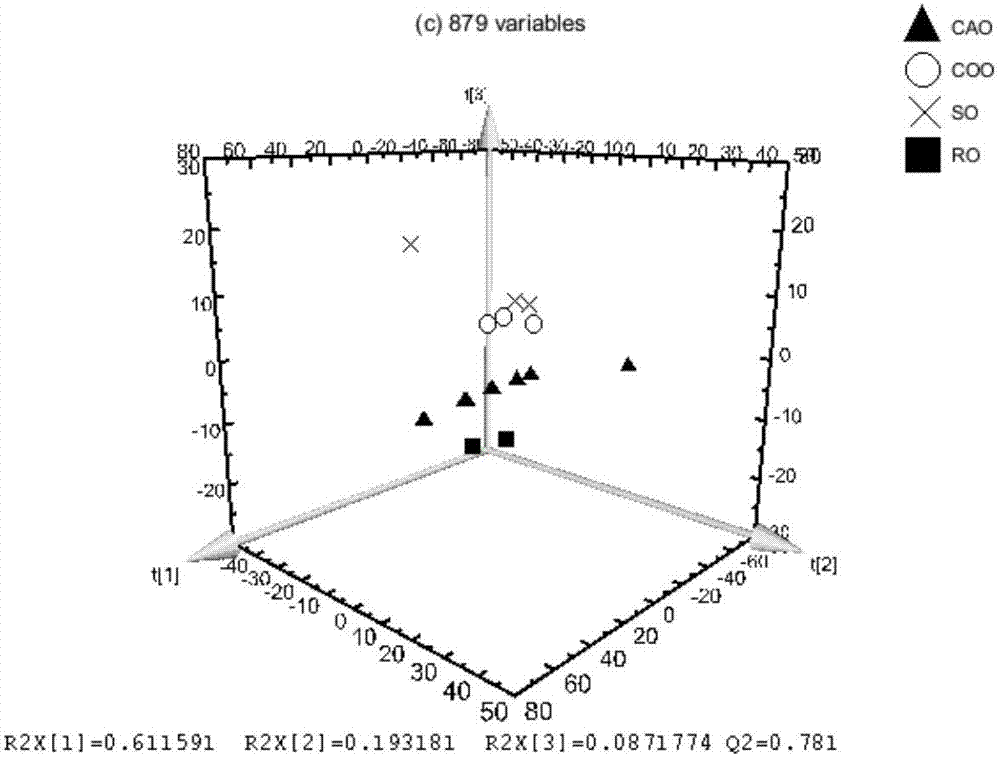Method of predicting types and contents of other adulterated oil in tea oil
A technology of doping oil and camellia oil, which is applied in the field of chemical analysis and can solve the problems of low precision of qualitative and quantitative detection
- Summary
- Abstract
- Description
- Claims
- Application Information
AI Technical Summary
Problems solved by technology
Method used
Image
Examples
Embodiment 1
[0040] 1. Sample pretreatment
[0041] Taking commercially available Lvhai brand tea oil and Qiyunshan brand tea oil as pure tea oil samples, different proportions (0%, 10%, 20%, 30%, 40%, 50%, 60% , 70%, 80%, 100% v / v) of corn oil, sunflower oil and rapeseed oil, vortexed.
[0042] 2. NMR experiment
[0043] Take 200 μL mixed oil sample with 800 μL CDCl 3 Mix, vortex for half a minute, let stand at room temperature for 5 minutes, transfer 600 μL to a 5mm NMR tube for NMR experiments. The NMR conditions are: the proton resonance frequency is 600MHz, the time domain is 32K, the pulse is 90, the time is 11μs, the spectral width is 10ppm, the recovery time is 2s, the signal detection time is 2.73s, and the number of scans for each free induction decay is 32, The number of virtual scans is 4. Chemical shifts are in ppm with tetramethylsilane (TMS, δ=0) as internal standard.
[0044] 3. Data processing and analysis
[0045] Will measure 1 The H NMR free induction decay signa...
Embodiment 2
[0059] (1) Establish adulterated oil sample library
[0060] Mix pure tea oil with corn oil, sunflower oil, and rapeseed oil at a volume ratio of 5%, 10%, 20%, 30%, 40%, 50%, 60%, 70%, and 80%, vortex, The total volume of the oil sample was 1 mL.
[0061] The tea oil used in the present invention comes from market sales and the National Quality Inspection Bureau, and corn oil, sunflower oil and rapeseed oil of different brands are purchased from local market.
[0062] (2) Obtain 1H NMR spectra of all oil samples
[0063] Take 200 μL mixed oil sample and 800 μL CDCl3, mix it, vortex, let it stand, and transfer it to a 5mm NMR tube for 1HNMR experiment. The NMR conditions are: the proton resonance frequency is 600MHz, the time domain is 32K, the pulse is 90, the time is 11μs, the spectral width is 10ppm, the recovery time is 2s, the signal detection time is 2.73s, and the number of scans for each free induction decay is 32, The number of virtual scans is 4. Chemical shifts a...
Embodiment 3
[0071] A method for predicting the type and content of other adulterated oils in camellia oil, comprising the following steps:
[0072] 1) Take pure camellia oil and other pure vegetable oils, mix the latter with the former in different volume ratios to obtain a number of samples to be tested;
[0073] 2) Take a number of samples to be tested as described in step 1), vortex and mix with deuterated chloroform respectively, and then detect their samples respectively. 1 HNMR spectrum;
[0074] 3) get the tea oil pure product of step 2) gained 1 H NMR spectra and other pure vegetable oils 1 H NMR spectrum, after phase and baseline calibration, segmental integration of different regions is used, and then PCA analysis is performed;
[0075] 4) Based on the PCA score situation obtained in step 3), select a preprocessing method for some of the obtained results in step 2) 1 The H NMR spectra were segmented and integrated respectively;
[0076]5) Take the data obtained in step 4) a...
PUM
 Login to View More
Login to View More Abstract
Description
Claims
Application Information
 Login to View More
Login to View More - R&D
- Intellectual Property
- Life Sciences
- Materials
- Tech Scout
- Unparalleled Data Quality
- Higher Quality Content
- 60% Fewer Hallucinations
Browse by: Latest US Patents, China's latest patents, Technical Efficacy Thesaurus, Application Domain, Technology Topic, Popular Technical Reports.
© 2025 PatSnap. All rights reserved.Legal|Privacy policy|Modern Slavery Act Transparency Statement|Sitemap|About US| Contact US: help@patsnap.com



